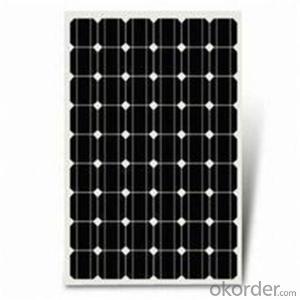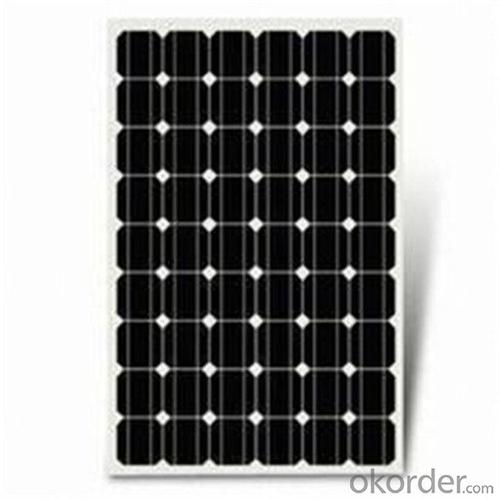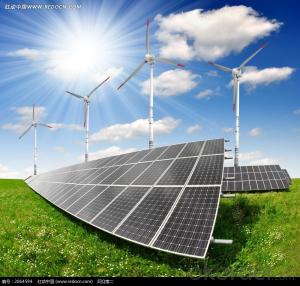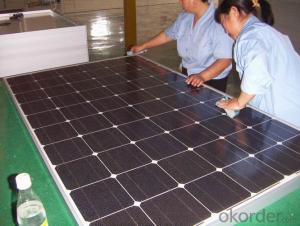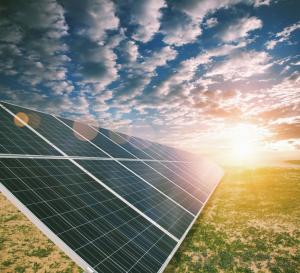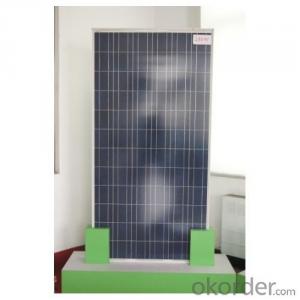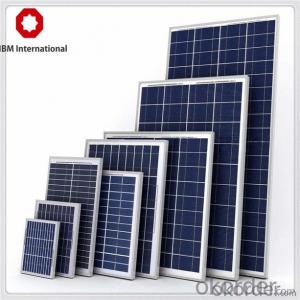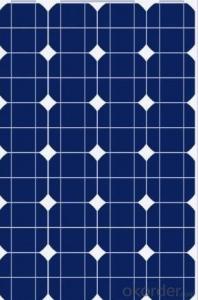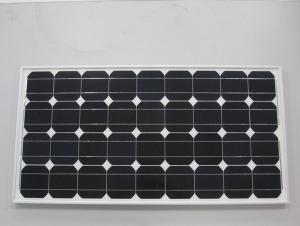25W Polycrystalline Green Roof Solar Panels Made in China
- Loading Port:
- Shanghai
- Payment Terms:
- TT OR LC
- Min Order Qty:
- 2000 watt
- Supply Capability:
- 20000 watt/month
OKorder Service Pledge
OKorder Financial Service
You Might Also Like
Specification
Quick Details
| Place of Origin: | Germany | Brand Name: | SOLARLAND | Model Number: | SLP25-06 |
| Material: | Monocrystalline Silicon | Size: | 262*136*18mm | Number of Cells: | 18 |
| Max. Power: | 25W |
Packaging & Delivery
| Packaging Details: | 280X225X155mm(10PCS/CTN) |
Specifications
SOLARLAND 95/12V Monocrystalline Silicon Solar Panel. Use quality brand solar cells directly imported from Germany.
| Panel Size | 262*136*18mm |
| Module Type | Polycrystalline |
| Peak power (Pmax) | 25W |
| Open circuit voltage (Voc) | 10.7V |
| Short circuit current (Isc) | 0.34A |
| Max. power voltage (Vmp) | 8.6V |
| Max. power current (Imp) | 0.29A |
| Operating Temperature(oC) | -40 to 85 |
| Power Allowance Range: | +/-5% |
| Max.System Voltage: | 1000V |
| No. of cells and connections: | 72(4×18) |
| Weight | 0.47kg |
| All technical date at standard test condition: | |
| Am=1.5 E=1000W/m2 Tc=25 | |
Trade & Market
| Main Markets: | Western Europe Eastern Asia Mid East Oceania Africa Southeast Asia South America North America | |
| Total Annual Sales Volume: | US$10 Million - US$50 Million | |
| Export Percentage: | 91% - 100% |
Advantages
Reason:
We enjoy exclusive channel to get stock solar panels at more competitive price from Trina,Hanwha,Yingli,LDK,Suntech etc.
These panels are from tier 1 solar panel manufacturers,such as Trina,Hanwha,Yingli,LDK.They are assembled with all grade A materials,only problem is that they has slight appearance defect,but due to their strict quality control,even the negligible defect will lower its grade.so they put these panels into stock.
Quality
These panels adopt all grade A materials,such as solar cell,EVA, back sheet, junction box, glass,frame,connector etc.
They have same electrical performance with grade A solar panels,only difference is the negligible superficial defect.
Our Service
Pre sale:
1.Our sales representative and engineer work together to answer your questions and offer solution for free
2.We choose the best product for you to make sure it worth its real value
3.We design the best solution with good perfomance for you,manwhile save every cent of your money.
After sale:
We provide 10 years Warranty for the product, 12 years warranty for 90% power production ,25 years warranty for 80% power production.
Factory Information
| Factory Size (Sq.meters): | 5,000-10,000 square meters | |
| Factory Location: | B11 Huayou Dong Rd., Huayou Industrial Area, National High-tech Industrial Area, Wuxi,China | |
| No. of Production Lines: | Above 10 | |
| Number of R&D Staff: | 21 - 30 People | |
| Number of QC Staff: | 21 - 30 People | |
| Contract Manufacturing: | OEM Service Offered Design Service Offered Buyer Label Offered |
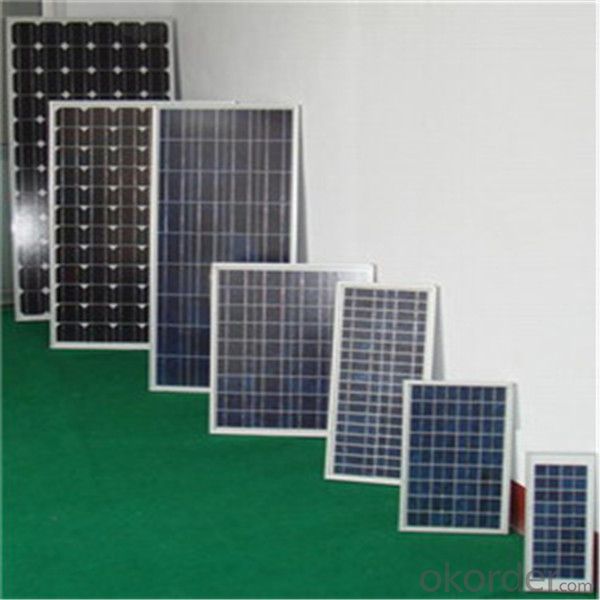

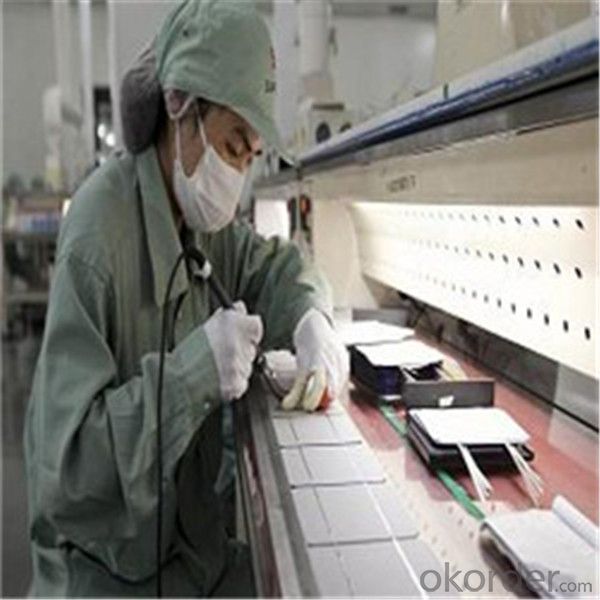
- Q: Can solar panels be connected to the grid?
- Yes, solar panels can be connected to the grid through a process called grid-tie or grid-connected system. This allows excess electricity generated by the solar panels to be fed back into the grid, reducing reliance on traditional power sources and potentially earning credits or payments from the utility company.
- Q: I am curious about how much of the energy that a solar panel of a given size and capacity will produce in it's lifetime, and what fraction of that energy was required to produce it in the first place?
- The attached link is to an article from the 200 Home Power magazine. In that article the energy payback was found to be between 2 and 4 years. Newer panels are more efficient primarily because the silicon wafers used today are thinner. The silicon cell embodies most of the energy required to make a solar panel. Today most solar panels will produce the amount of energy required to manufacture them in between about 9 months and 2 years depending upon the specific technology used to make it. Solar panels are expected to produce energy for between 30 and 50 years. Therefore it takes around 5% of their total energy production to produce them. Note that these figures depend upon where the panels are installed. Panels in very sunny areas may generate more than 3 times the energy of panels in a cloudier area. Edit - The energy payback meta-study that carbonates references below mention one particular study Alsema (2000), which the authors used as a baseline to come up with their 4 year payback figure. These studies DO NOT assume ideal conditions. The Alsema study assumes an annual an irradiation of 700 kWh/m2/yr. That is the United States average irradiation and does take into account cloudy weather and the like. Under idea conditions the amount of energy collected can be almost twice as much. Albuquerque New Mexico is an example. The figures I mentioned above are recent values reported by several different panel manufacturers with whom I discussed the issue at the 2006 IEEE 4th World Conference on Photovoltaic Energy Conversion held this May. The very long payback times that carbonate highlights are almost certainly wrong. The study he references concludes that paybacks range between 2 and 8 years with 4 years being the most likely. In my opinion payback times are actually a fair bit shorter based on conversations with the manufacturers.
- Q: Can I add more solar panel let say up to 200 watt and adding two 2 volts battery using the same charges controller and power inverter?
- If you put a black panel on the ground or on your house and don't connect it to anything, it will absorb solar energy (heat) during daylight and release it at night (radiation). Not exactly. Assuming the black panel establishes an equilibrium temperature, it's going to be losing exactly as much heat as it's receiving during the day. Some will radiate out into space, some will conduct or convect into the atmosphere. As a wild guess, maybe 50/50. If you hook up a solar panel in the same place but hook it up to batteries, charge the batteries during sunlight hours and using that energy to electrically heat the home at night. The panels will absorb solar energy during the day but will convert that to electrical energy in the batteries instead of radiating it back into space at night. The panels are only about 4% efficient, so it's the same situation as the pure black panel for 86% of the energy. The remaining 4% will get stored in the batteries and then converted to heat at night. That heat will eventually leak out of the house and warm up the Earth a tiny bit. I think it's much the same situation either way. With the black panel the energy gets radiated / conducted/convected right away. With the solar panel a small percentage is stored and not so much is radiated, mostly conducted and convected. You're partly right as a black panel is going to radiate more into space than a house. But you're taking about maybe some day about 4% of % of the differening radiation/convection/conduction fraction, of the Earth's surface area. Probably not significant.
- Q: Hi.How efficienent are solar panels? I mean, suppose we install a kw panel.. Wil it produce 5kw in 5 hours of good sun light?Or like if its 80 percent efficient, wil it produce 4kw and so on.Also, do the chinese solar panels give the same results as compared with panels from other countries?I live in india, so we get plenty of sunlight during the day.Thanks
- The Sunforce 50048 60-Watt solar charging kit is designed as an “out of the box” solution to your solar power needs.The Sunforce 50048 60-Watt Solar Charging Kit gives you several more reasons to love the sun.It provides the power you need, while helping you save money and protect the environment. This kit is ideal for cabins, recreational vehicles, remote power, back-up power, and 2-volt battery charging. It comes with everything you need to start producing up to 60 Watts/4 Amps of clean, free power in all weather conditions.
- Q: When you add a load resistor to a PV panel (Solar panel) of 00 ohms what happens to the voltage produced from the cellAlso, as the resistance increases, how does this affect the output voltage
- Look at the graph data that looks like a rotated L. That is what voltage as a function of current characteristically behaves. The highest voltage value is called open circuit voltage (Voc). The current at lowest voltage value is called short circuit current (Isc). If you notice, a second curve is plotted that looks like a hill. That curve is power output as a function of voltage. At the peak of said hill, you get the most utility of your PV module, as you output the maximum power possible, and that is the nameplate value for the PV module's power rating.
- Q: Do solar panels require permits for installation?
- Yes, in most cases, solar panels require permits for installation. The specific requirements and regulations vary depending on the location, but obtaining permits ensures that the installation meets safety standards and compliance regulations set by local authorities.
- Q: Can solar panels be installed on parking lots?
- Yes, solar panels can be installed on parking lots. In fact, parking lots can provide ample space for the installation of solar panels, making use of the otherwise unused area. This not only generates clean and renewable energy but can also provide shade for vehicles, reducing the need for air conditioning and promoting sustainability.
- Q: Do solar panels require a battery for energy storage?
- No, solar panels do not require a battery for energy storage. They can be directly connected to the electrical grid and the excess energy generated during the day can be fed back into the grid and used at night or during cloudy periods. However, batteries can be used to store the excess energy for later use, especially in off-grid systems or areas with unreliable grid access.
- Q: I live in the UK, I have no savings (so would have to take out a loan of about ?8000), I don't know how long I plan to stay in my house, I might want to move in a year or two to take advantage of a better job so I want to keep the option open of being able to sell my house without having to pay off the cost of having the panels fitted (which I probably won't get back on the increased value they add to my house).What are the main advantages of having solar panels?What are the pitfalls the ever so eager cold callers with quotas to fill don't tell you about?Basically is it worth having them?Thankyou.
- View okorder /. Too expensive and it may be illegal.
Send your message to us
25W Polycrystalline Green Roof Solar Panels Made in China
- Loading Port:
- Shanghai
- Payment Terms:
- TT OR LC
- Min Order Qty:
- 2000 watt
- Supply Capability:
- 20000 watt/month
OKorder Service Pledge
OKorder Financial Service
Similar products
Hot products
Hot Searches
Related keywords
